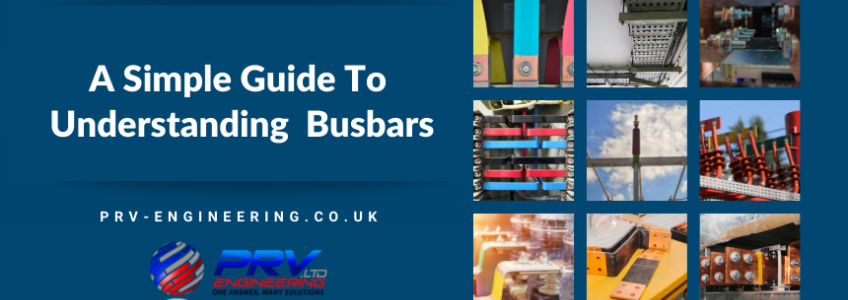Custom busbar fabrication is a cornerstone of modern engineering, powering critical systems in the rail and construction sectors. These versatile components ensure the efficient and reliable distribution of electricity in high-voltage electrical systems, enabling seamless infrastructure operation. From track electrification and rolling stock in the rail industry to powering high-rise buildings and heavy machinery in construction, busbars are vital for modern energy distribution. With growing demand for sustainable energy solutions for rail and construction, bespoke busbars pave the way for a more efficient, reliable, and environmentally friendly future.
The global busbar market is undergoing significant growth, fuelled by the increasing demand for efficient power distribution solutions across various industries. As the world moves towards more sustainable and energy-efficient practices, busbar production is becoming a pivotal element in the electrical infrastructure.
EV battery swapping is currently a hot topic, and rightfully so, given the remarkable progress of electric vehicles since their inception. With advancements in battery tech, EVs now boast extended ranges and quicker charging, making them a more practical choice for daily driving. Nonetheless, concerns like range anxiety and lengthy charging times still hinder widespread adoption. This is where EV battery swapping technology shines, offering a solution that tackles both challenges head-on.
Tesla Battery Tech Excels in Off-Road Motorsport
- February 26, 2024
- Automotive
In the world of motorsport, innovation takes the lead, pushing boundaries and redefining what vehicles can achieve. Recently, a Chevy S-10 with Tesla battery tech captured the attention of enthusiasts and experts alike at the brutal King of the Hammer off-road racing event in California. Despite facing off against traditional monster V8s, the TesTen’s electric torque delivery gave it the edge; showing that Tesla battery tech is at home off-road as it is on the road.
Busbars are an integral part of most electrical systems, yet many people may not be familiar with their purpose or how they are made. In this guide, we will explore the basics of busbar manufacturing and why it is essential to choose a reliable bus bar manufacturer for your specific needs.
How PRV Has Triumphed in Railway Engineering
- August 4, 2023
- Railway Industry
Imagine the railway system as an elaborate symphony – a harmonious blend of science, technology, and brilliant engineering. Or, as Alexander Graham Bell once said, “Great discoveries and improvements invariably involve the cooperation of many minds.” It’s a sector that fosters collaboration, a testament to human ingenuity. At the heart of this symphony, you’ll find railway engineering, an intriguing field combining civil, mechanical, and electrical engineering with architecture, geography, and even a sprinkle of archaeology.
Busbars: Understanding Their Purpose And Benefits
- October 5, 2021
- Busbars
Busbars, or buss bars, are also known as busbar trunking systems that distribute electricity with greater ease and flexibility. They are often metallic strips made from copper, brass, or aluminium that ground and conduct electricity better than other more permanent forms of installation and distribution.
An electrical bus bar can be defined as a conductor or group of conductors that collect incoming electricity and distribute it to an outgoing feeder circuit. The choice of bus bar depends on different factors such as reliability, flexibility, costs and time. Here is everything you need to know.
Where Are Busbars Used?
Rather than branching the main supply at one location, busbars allow new circuits to branch off anywhere along the route of the busway. A busbar is used to connect high voltage equipment at electrical switchyards, and low voltage equipment in battery banks but it is also prominent in the automotive and defence sectors.
What Is A Copper Busbar?
Copper is a highly versatile material known for its low electrical and thermal resistance as well as superior mechanical strength. It also has a higher resistance to fatigue failure properties which makes copper a key component in busbars of electrical utilities. This includes switchgear, panel boards, and busway enclosures for local high current power distribution. However, it can be used for nearly any application within specification.
Is An Aluminium Busbar As Good As Copper?
When compared to copper, aluminium busbars are manufactured using a lighter material which makes it more cost-effective to mass-produce. It offers a great solution for companies where budget, maximum weight and ease of installation are major considerations. Although aluminium is lighter, it must have a larger surface area than copper as it is not as conductive as copper. To match the same criteria of a copper bus bar, the size of the conductor must be larger and that is not always practical or feasible. While aluminium is the main alternative to copper and has many positive attributes, it’s been shown that in almost every practical aspect, copper is the better choice.
What Are Laminated Busbars?
Laminated busbars have layers of fabricated copper that are separated by thin dielectric materials which are laminated into a unified structure. The layers are heated and compressed into an integrated component that offers several performance advantages over single-layer bus bar and cable conductors. The size and application vary from surface mounted busbars smaller than a coin to multilayer busbars several feet in length.
Why Are U-shaped Busbars Popular?
The reason why U-shaped busbars are popular is due to their ability to deliver continuous and reliable connections while maximising the potential locations. Here are a few more benefits to take note of:
- The U-shape has a better weight distribution that mitigates distortion from excessive force
- It enables simple expansion, reconfiguration, or relocation operations
- The shape applies continuous pressure to every joint
- U-shape busbars create a solid connection and eliminate the need for routine maintenance
Is Using A Busbar System Really More Energy Efficient?
People are always looking for ways to increase energy efficiency to cope with fluctuations in demand and busbar systems are often the solution. They not only reduce system costs while improving reliability but also increase capacitance and help eliminate wiring errors and lower inductance. The physical structure of a bus bar is a benefit in itself as it offers unique features in mechanical design. Multilayer busbars, for example, provide better structural integrity compared to other wiring methods. You can use busbars to conduct any form of electrical current from any type of grid. Recommended: Guidance for Design and Installation Of A Copper Bus bar
The Importance Of Monitoring Power Usage For Better Efficiency
Energy efficiency remains one of the top concerns in industrial organisations and the corporate world. However, you can’t improve energy efficiency if you are not measuring it properly and without a baseline. If you don’t continuously measure performance and evaluate results, it is almost impossible to identify areas for improvement.
Some busbars do offer power monitoring as a standalone system mounted to electrical panels, or incorporated into a busway and branch-circuit applications. If you monitor power usage, you will be able to achieve the following:
- Identify current power costs which will help set a baseline
- Determine potential cost savings and set consumption goals
- Implement certain projects to further improve energy efficiency
- Continuously measure usage for more accurate results and optimisation efforts
Why Are Busbars Coated?
Busbars are made from corrosion-resistant copper, brass or aluminium in solid or hollow tubes. The shape and size are either flat strips, solid bars or rods that allow for more efficient heat dissipation due to the high surface area to cross-sectional area ratio. Even though copper oxidises over time, it remains conductive but it requires more power to move electricity along the surface. While it cannot completely prevent oxidising over long periods, it greatly reduces the effects. Bus bar coatings typically serve three main purposes, namely:
- Inhibit corrosion
- Increase conductivity
- For cosmetic purposes
Recommended: All The Reasons For Coating Bus Bars
Conclusion
As part of PRV’s electrical busbar manufacturing services, we provide several specialist coatings for additional insulative or conductive properties. We’ve been supplying the industry with quality busbars, conductors, contacts and connectors for many years. We use copper to manufacture all components for low, medium and high voltage industries such as rail rolling stock and trackside electrical components.
Our copper busbars offer the perfect balance between cost and application, especially with projects requiring higher levels of performance, versatility and reliability. Some of the services we offer our clients in the electrical industry include punching and folding, forging and pressing, complete machined castings and stampings, busbar fabrication, plating and heat shrink sleeving.
Find out more about PRV Engineering, busbars, deep hole drilling and other specialist engineering services on our website and our dedicated YouTube channel.
What Are Copper Busbars Used For?
- May 7, 2021
- Busbars
FAQ About Electrical Copper Busbars
First and foremost, busbars (often spelt bus bars or buss bars) are often metallic strips made from copper, brass or aluminium that ground and conduct electricity. Copper busbars are popular as the metal is soft, malleable and ductile with very high thermal and electrical conductivity. It’s the preferred choice for many due to its superb resilience to higher temperatures which provides extra security during short circuit situations.
What Are Electrical Busbars And Where Are They Used?
- January 15, 2021
- Busbars
Electrical busbars form the backbone of most power applications and provide the all-important interface between power modules and the outside world. Electrical busbars are a prime example of the latest engineering feats as they make complicated power distribution much easier, cheaper and more flexible.
Even as power applications become smaller, faster and more complex, busbars will remain the primary choice for electrical power distribution. They will also continue to evolve to meet certain requirements and criteria in the future.
In this article, we take a closer look at what electric bussing means, how an electrical busbar system works as well as the benefits and common applications.
How Do Busbars Work And What Are They Used For?
- September 9, 2020
- Busbars, Manufacturing
Busbars (also referred to as bus bar) are fascinating feats of engineering making complex power distribution simpler, more affordable and flexible. The main purpose of busbars is to conduct a substantial current of electricity and are typically housed inside switchgear, panel boards or busways.











Recent Comments